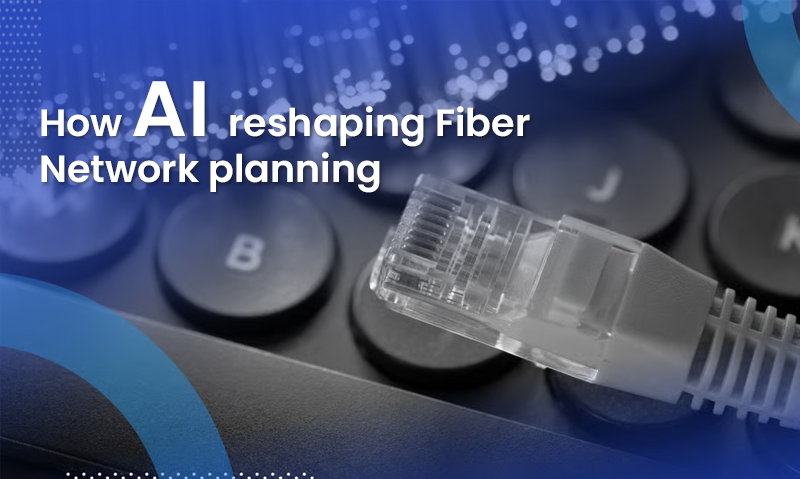How AI reshaping Fiber Network planning

Fiber network implementation is a complex and demanding of resources operation that requires careful planning, exact execution and continued maintenance to be successful. Every step of the rollout process, from determining the best routes to managing construction and ensuring regulatory compliance, presents substantial obstacles. These problems get worse because we have to cope with the growing demand for high-speed internet while keeping prices down and meeting tight schedules.
AI is no longer something that will happen in the future; it’s a game changer that is changing the way we develop and run our telecommunications infrastructure. By integrating AI and machine learning, network operators are transitioning from manual, reactive operations to a new era of intelligent, automated, and predictive network design.
Historically, planning a new fiber network required a lot of physical labor. Teams of engineers would study over maps, perform field surveys, and apply their knowledge to establish the optimum paths. This method was prone to human mistake, might take months to complete, and frequently resulted in costly rework.
AI is changing all this;
Intelligent Route Optimization
AI algorithms can analyze vast datasets in a fraction of the time it would take a human. This includes:
Geospatial data: Maps, terrain data, satellite imagery, and existing infrastructure.
Demographic data: Population density, customer demand forecasts, and urban development plans.
Cost data: Material costs, labor expenses, and permitting fees.
By processing this information, AI can identify the most efficient and cost-effective routes for fiber deployment. It can simulate different scenarios to test feasibility, minimize disruptions, and maximize the return on investment.
Automated Network Design
More than route planning, AI is automating the entire design process. Automated Fiber Network Design (AFND) platforms use AI to create detailed network schematics, including the placement of splitters and distribution hubs. This can drastically reduce the time it takes to produce a design, from a manual process that could take 45-60 days down to a matter of weeks. The result is faster deployment, reduced labor costs, and minimizes errors and costly revisions.
Once a fiber network is operational, AI’s function moves from planning to continuous management. Traditional fault detection is frequently reactive, with an issue handled only after a consumer has experienced a service outage.
AI-powered systems, on the other hand, can track network activity in real time. Machine learning models can detect small patterns and abnormalities that indicate a possible problem before it escalates into a full-fledged outage by analyzing data from numerous sources such as Optical Time-Domain Reflect meter (OTDR) traces and network management systems. This predictive capability enables proactive maintenance, which reduces downtime and improves overall network resilience.
The demand for bandwidth is not static. It fluctuates throughout the day, week, and year. AI can optimize the allocation of network resources based on these dynamic demand patterns. By analyzing usage data and predicting fluctuations, AI algorithms can automatically adjust resource allocation to ensure the network remains efficient, even during peak usage times, and prevent congestion.
Planning fiber networks with AI involves more than just speeding up current procedures; it involves creating a completely new type of network, one that is AI-native. These self-optimizing, self-healing networks will be capable of self-management, automatically adapting to shifting circumstances and predicting requirements in the future.
AI and fiber optics coming together is a tremendous force that will change how we connect in the future. As the demand for speed, capacity, and reliability grows, AI will be the critical tool for developing tomorrow’s intelligent infrastructure.